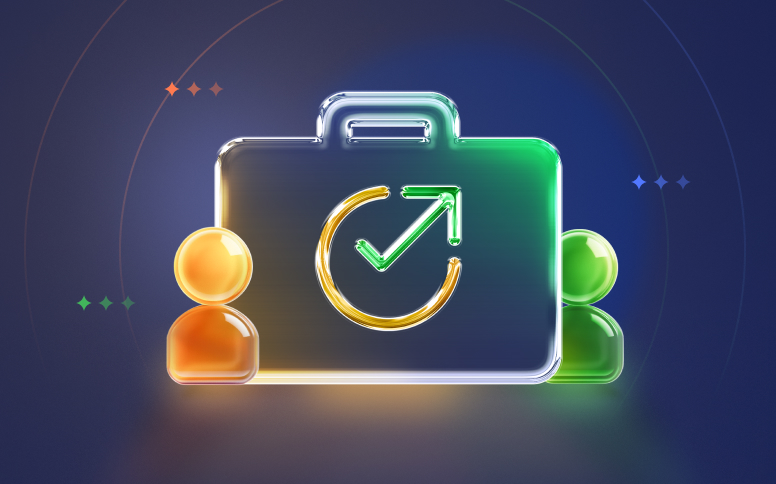Out of Scope in Project Management: Where to Draw the Line
As a project manager, one of your roles is to define the scope of a project and then make sure that all the work is completed and delivered. But this work is included in scope instead of out of scope.
To ensure that you understand what is out of scope, we believe it’s important to first define what is the project scope and then look at the out of scope definition. To make sure that you have a clear understanding of out of my scope meaning, we will take the time to show you some in scope, out of scope examples so that you can understand the difference.
What Is a Project Scope?
Simply put, when you’re talking about project management, the scope is the requirements and boundaries of a project. We can then say that the scope of a project includes two things: all the elements that the team needs to address and the work they will need to do to complete it.
As you can easily understand, the scope of a project depends on different factors:
- The goals of the project
- The work to meet the goals
- The budget
- The employees
All the work that is directly linked to the scope that was determined is called “in scope.” As a PM, it’s your job to ensure that each team member completes only the in scope tasks.
So, What Does Out of Scope Mean?
The definition of out of my scope is quite simple, actually. It’s just anything that isn’t included within the boundaries of the project that was established in the first place.
For example, a task that wasn’t included in the original project outline and isn’t important to meet the project goal is out of scope. Just think of all the unnecessary tasks for the successful outcome of the project. These are all out-of-scope work.
To better understand the out-of-my-responsibilities meaning, here’s a simple example. Imagine that a customer asks an IT professional to help set up an email system for his company.
Some of the in-scope elements this project may include are choosing the email platform, the configuration of the servers, checking its performance, and conducting all the data migration necessary from the previous system. However, if the customer would then ask the IT professional to set up his new CRM system, this is clearly out of scope.
How to Determine if a Task is Out of Scope
There isn’t only one reason for a task to be considered outside the original plan. There may be many different reasons for this to occur. Here are the most common ones:
- It isn’t relevant for the end goal.
- The timeline is strict, which means you can’t include a simple task that may affect the most important tasks and delay the project.
- A criterion was deleted on purpose from the original project outline that defines its extent.
- You may only request one service from the provider at a time. All the other services are out of scope.
- The customer wants a small project because he has limited resources.
What is a Project Scope Statement?
Simply put, the project scope statement is a document where you can find what is included in the boundaries for a specific project. This statement is similar to a plan and includes:
- The objective
- The timeline
- The deliverables
- The reports
- The budget
- The constraints
- The exclusions
Here’s a simple example:
- The objective: Design of a mobile app
- The timeline: 4 months from the initial start date
- The deliverables: The app, code, graphics, and sound
- The reports: The PM will issue a report every two weeks
- The budget: $15,000
- The constraints: Non-existent
- The exclusions: Marketing
Out of Scope Examples
With the project scope statement we just described in mind, here are some requests that would be considered out of our responsibilities.
- Publish the app on the respective store
- Create a marketing campaign
- Develop a second app
- Create a QR code
- Add new features that weren’t included in the detailed project statement
- Changes to the functionality of a feature. Since this is a project that takes months to complete, such a change could be seen as a way to force the project manager to include something out of scope within the scope of the project.
Hopefully, these in-scope and out-of-scope examples showed you how you can make the distinction between such project management tasks.
What Is Scope Creep?
Scope creep is the tendency of some projects to lose focus of its main goal or become larger. As you can easily understand, the out-of-scope project management examples we just mentioned above fit the scope creep definition.
So, how can you avoid scope creep to keep the project within its limits?
7 Tips to Avoid Scope Creep
All projects will deal with unexpected challenges and details along the way. And it’s your team and your job to ensure that you can solve them, but always keeping in mind that your time and budget are limited.
Here are some tips you may consider following:
#1: Keep Your Records Clear:
This is one of the best tips you can follow. By maintaining your records clean and updated, you’ll be avoiding scope creep. Before you begin the work, you should make sure you have a project scope statement signed by both you, the client, and stakeholders. This ensures that you all know what’s included in the agreed work and that your team can always confirm the tasks they need to complete.
As the work evolves, you should document its progress, the resources, or any other changes you believe are important.
A tool like Flowlu makes it easier to keep scope documentation organized and accessible. You can attach files, track approvals, and log updates without needing a dozen spreadsheets or email threads.
#2: Anticipate Changes:
Another great tip to avoid scope creep is to always be prepared for changes. Before you launch, determine what you’ll do if a client asks for an out-of-scope task.
#3: Stay Loyal To Your Limits:
You defined the limits of the work when you created the project scope statement. If everyone has agreed with it, you need to be firm about the limits that were established. If a customer insists he wants something additional to the original agreement, you may then decide if you’re willing to do it for an extra rate or not. However, in most cases, it’s better to simply decline instead of keeping agreeing with a customer just to make him happy.
#4: Establish Priorities:
When you’re still talking to the client and defining the work boundaries, it’s important to understand and make it very clear about the things that are must-have and the ones that would be nice to have. While in the beginning of the meeting, you may have a project full of must-haves, at the end and when it’s time to determine the budget, the client will probably turn most of them into nice-to-have.
#5: Define Each Deliverable:
When you’re defining the deliverables, you want to make sure that you are specific. You should always be as detailed as possible and describe all the features included, the cost, and the timeline.
#6: Use Automation:
As you lead more initiatives, you’ll get more experience creating work definition statements. However, when you are in the beginning, you should ask more experienced PMs their opinion regarding your statements. This will ensure that you don’t forget about any detail.
With time, you may then come up with your own template and reminders of some aspects that you should always include.
#7: Check Your Project Milestones Regularly:
This is very important since it allows you to know exactly where you’re standing regarding your timeline, resource allocation, and assessing quality.
The truth is that you just have to assume that not every initiative will be delivered on time or under budget. This is another reason why you should maintain regular contact and communication with the client about the project status.
Platforms like Flowlu let you set clear milestones, monitor progress in real time, and adjust timelines if something changes——without losing track of what’s in or out of the agreed work.
Bottom Line
Managing a project isn’t easy, but it’s manageable, and you’ll become better with time. And the same is true in what concerns understanding the meaning of out of scope, as well as in imposing limits to clients.
Hopefully, our out-of-scope examples and the in-scope vs. out-of-scope comparisons helped you understand this concept better, as well as the tips to prevent scope creep.
The project scope statement should be defined and created during the planning stage. The parts involved should all be in sync so that everyone knows what to expect.
This document should be created by the project manager, but the client also needs to be involved in the process. Keep in mind that you may also check with your team members when you’re defining the different tasks that will need to be done. Any other tasks outside the defined work or that may change the project’s objective are considered out of the original plan.















